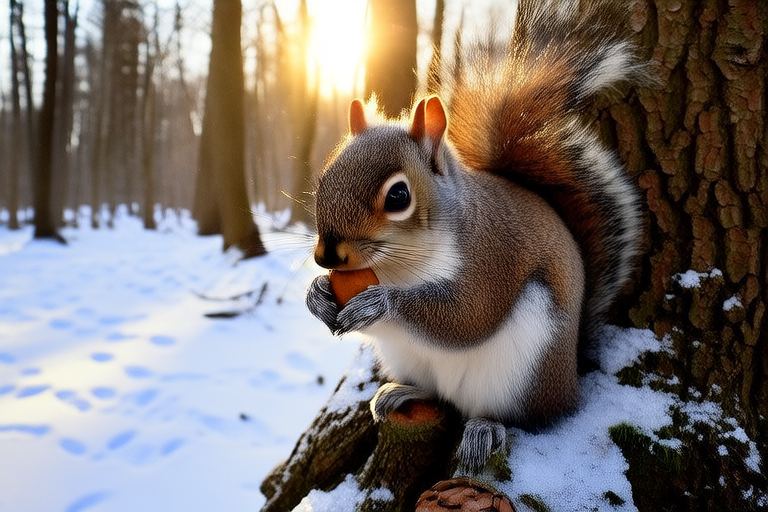Squirrels in Winter: Survival Strategies Against the Cold
Winter brings a formidable challenge for many animals, including squirrels. As temperatures drop and food becomes scarce, these resilient creatures must employ a variety of survival tactics. From their unique food storage habits to their cozy shelters, squirrels have evolved remarkable adaptations to endure the cold season. This article explores the diverse strategies employed by different squirrel species, highlighting their resilience and ingenuity.
The Winter Challenge
For most squirrels, winter poses a significant threat. Food sources dwindle as plants go dormant, and the cold can sap energy reserves. However, squirrels are not passive victims of nature’s whims; they actively prepare for the colder months. Understanding the challenges they face provides context for their remarkable survival techniques.
Food Storage: A Year-Round Effort
One of the most iconic behaviors of squirrels is their habit of storing food. Red squirrels, for instance, create caches of seeds and nuts, which they can access throughout the winter. Gray squirrels take this a step further by burying acorns and other foods in various locations, a strategy known as scatter hoarding. These caches serve as lifelines when food is scarce.
Remarkably, gray squirrels can remember the location of up to 90% of their cached nuts, a testament to their spatial memory capabilities. This skill is crucial for their survival, ensuring they have a reliable food supply even when snow blankets the ground.
Hibernation vs. Non-Hibernation
Not all squirrel species hibernate. Ground squirrels, like the thirteen-lined ground squirrel, enter a state of torpor, reducing their metabolic rate and body temperature significantly. In contrast, tree squirrels, such as red and gray squirrels, remain active throughout the winter, relying on their food caches and warmer shelters.
During torpor, ground squirrels’ body temperature drops to near freezing, and their heart rate slows dramatically. This adaptation allows them to conserve energy, but it also means they must awaken periodically to eat and defecate. The balance between conserving energy and maintaining health is delicate.
Behavioral Changes
As winter approaches, squirrels exhibit several behavioral changes. They become more reclusive, spending less time outside their dens and more time preparing for the coming cold. Red squirrels, for example, become more territorial, defending their food caches against intruders.
Tree squirrels, while remaining active, also modify their behavior. They spend more time foraging during the warmer parts of the day and return to their nests at night. This adjustment helps them avoid the coldest temperatures and conserve energy.
Shelter Preferences
Choosing the right shelter is critical for a squirrel’s survival. Tree squirrels prefer tree cavities or leaf nests high above the ground, where they are protected from predators and insulated from the cold. Ground squirrels, on the other hand, dig burrows underground, where they can retreat into deeper chambers during particularly cold spells.
Red squirrels often use tree cavities or build nests called dreys in the forks of trees. These dreys are constructed from twigs, leaves, and moss, providing excellent insulation. Gray squirrels, however, tend to favor leaf nests or abandoned bird nests, which they line with soft materials for warmth.
Physiological Adjustments
In addition to behavioral changes, squirrels undergo physiological adjustments to cope with the cold. Their metabolism increases slightly, allowing them to generate more body heat. They also develop thicker coats, which provide additional insulation.
Some species, like the northern flying squirrel, have specialized adaptations for cold weather. Their large ears and long tails help regulate body temperature, while their nocturnal lifestyle minimizes exposure to daytime cold.
The Resilience of Squirrels
Despite the challenges of winter, squirrels demonstrate remarkable resilience. Their ability to store food, find shelter, and adjust their behavior and physiology ensures their survival. The next time you see a squirrel scurrying about in the cold, remember the complex strategies they employ to thrive in harsh conditions.
Conclusion
Squirrels are masters of adaptation, employing a wide range of strategies to survive winter. From caching food to finding warm shelters, these small creatures face the cold head-on. By understanding their behaviors and adaptations, we gain insight into the incredible diversity of life and the intricate ways in which animals interact with their environments.
